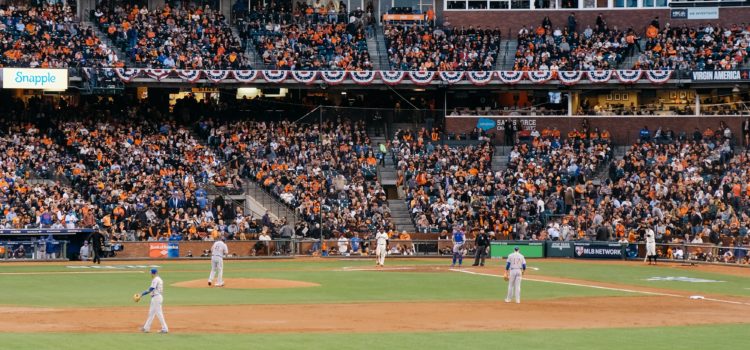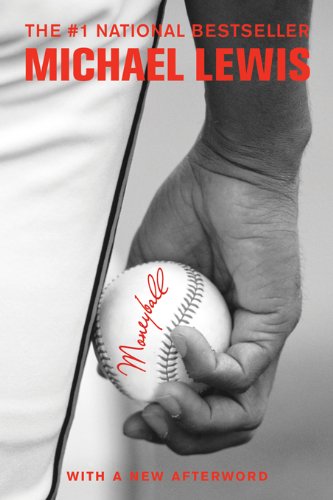

This article is an excerpt from the Shortform summary of "Moneyball" by Michael Lewis. Shortform has the world's best summaries of books you should be reading.
Like this article? Sign up for a free trial here .
What did the 2002 Oakland A’s do? What made this team unique?
The 2002 Oakland A’s did go to the playoffs, but that’s only part of what makes this season so interesting. The 2002 Oakland Athletics redefined how to build a strong baseball team, and introduced the idea of Sabermetrics to the mainstream baseball world.
Extracting Value
Before the start of the season, Paul DePodesta calculates that it will take about 95 wins to reach the playoffs in 2002. With this as the end goal, it’s then a matter of working backwards: to achieve 95 wins, they will need to have a runs scored vs. runs allowed differential of +135 (Bill James had discovered that there is a stable ratio between run differential and wins).
And this is where the team’s data-driven approach really pays dividends. The loss of Isringhausen, Damon, and Giambi definitely costs the team, but it costs them in a way that can be measured and quantified. If these players’ contributions to the positive run differential is now gone, they must find the players who, based on past performance, will be able to fill in those gaps. Such players don’t need to be highly paid stars, they just need to contribute to the team’s net run total. And such players can be had for very little, thanks to the irrationalities of the labor market for baseball players. Here are some examples of how the 2002 Oakland A’s focused exclusively on value.
Jason Isringhausen: Selling the Closer
As a closer, Isringhausen only pitches at the end of the game, in relief of the starting pitcher. But closers, Billy realizes, are highly overvalued and overrated because GMs put too much stock in the usefulness of “saves.” A closer earns a save by doing nothing more than not losing a game that is already nearly finished by the time they take the plate.
The likelihood of a team winning or losing any game is largely determined before the closer makes their appearance. A save is earned mostly on the backs of the team effort that precedes them—if a closer comes into a game in the ninth inning, with his team already leading and no one on base, he is likely to earn the save regardless of what he does. The save, the key metric by which closers are valued, is, like the RBI or the error, heavily weighted by luck.
But Billy knows that the rest of the league still believes in the value of closers. When Beane had acquired Isringhausen back in 1999, he was a minor league pitcher in the Mets organization. So the 2002 Oakland A’s grooms him into a role as a closer, giving him the opportunity to inflate his save totals. When Isringhausen later becomes too expensive (because his ability is overvalued by the rest of the league), Billy ships him off to the St. Louis Cardinals, in exchange for two first round picks in the 2002 draft—one of which will later be used to acquire Jeremy Brown. The practice becomes known inside the Oakland organization as “selling the closer.”
Johnny Damon: Overvalued Slugger
Johnny Damon is a center fielder and a slugger with a talent for extra base hits. He boasts a great slugging percentage (a similar statistic to batting average, except weighted to account for extra base hits like doubles, triples, and home runs), is thrilling to watch at the plate, and is a fan favorite. Yet Beane and DePodesta also see that Damon strikes out a great deal—indeed, he makes outs at a rate that greatly reduces the return on investment of retaining him.
After revising Bill James’s old “Runs Created” formula, DePodesta concludes that an extra point of on-base percentage contributes three times as much to runs as slugging percentage. A player who rarely hit triples or home runs, but consistently gets on base through walks and singles, is more valuable than a flashy slugger like Damon who tends to strike out—yet such a player is likely to command a much smaller salary than a player like Damon.
Evaluated this way, Damon performs poorly, with a .324 on-base percentage—ten points below the league average. Thus, his offensive skills are replaceable. The team needs to find a combination of players that can compensate for the loss of Damon’s expected run value. And with the rest of the league having such a poor understanding of these concepts, Beane and DePodesta know they can get such players for a fraction of what they are really worth. This is why they allow Damon to walk after the 2001 season.
The 2002 Oakland A’s Playoff Crapshoot
The 2002 Oakland A’s shock the baseball world by winning the AL West Division, with a record of 103-59. They have one of the best regular season records in all of baseball, second only to the Yankees (the team that poached Jason Giambi). Going into the season, the media and old guard of baseball had believed the Oakland A’s 2002 season team barely stood a chance of making the playoffs at all, let alone of winning their division. Their success is a testament to Beane and DePodesta’s value investment strategy in building the team and a stunning rebuke to decades of conventional wisdom about what makes a winning ballclub.
One of Billy’s favorite proof points is the fact that the Minnesota Twins have scored 32 fewer runs than the A’s, despite having a team batting average that is 11 points higher. Billy explains to his team and to the media that this disparity is due to the fact that the Twins’ on-base percentage is lower, and on-base percentage matters far more for run production than batting average. The Twins also squander outs by making foolish plays like attempting to steal bases and hitting sacrifice bunts at a rate far higher than the A’s.
This is a major point of contention between the A’s and the baseball traditionalists, particularly television and radio commentators like former player Joe Morgan. Morgan argues that teams must “manufacture runs” to achieve success in the playoffs, i.e., trade outs for runs through stealing bases and hitting sacrifice flies and bunts. Billy thinks this argument betrays a deep ignorance of the game. Why would a team treat outs as anything other than a precious resource to be preserved at all costs? And why should the process for winning a baseball game be any different in the playoffs than it was during the regular season?
Billy knows that much of the baseball commentariat is actively rooting against his team in the playoffs. They seem to not so much disagree with his club’s ideas about how to win baseball games as to be outright offended by them. Winning games without flashy home run sluggers or lighting-speed pitchers, to these keepers of baseball’s conventional wisdom, is a violation of the natural order of things, a perversion of the noble tradition and spirit of America’s national pastime.
Unfortunately for Billy and the 2002 Oakland A’s, the Joe Morgans of the world get their wish when the Oakland A’s 2002 season ends in the first round of the playoffs, losing three games to two in a best-of-five divisional series to the Minnesota Twins. The naysayers believe that this proves Billy Beane wrong: the Twins, with their high slugging percentage and team batting average, have beaten the sabermetric, on-base percentage-obsessed 2002 Oakland A’s. The old school of subjective baseball commentary is right; the new school of data analysis and number crunching is wrong.
But is this really true? Can such sweeping inferences be drawn from a five-game playoff series, which the A’s barely lost? To Billy Beane and Paul DePodesta, the answer is a resounding “no.” The A’s poor playoff performance relative to their stellar regular season record is entirely explained by the small sample sizes of the playoffs, in which random on-field events have an outsized impact on the outcome of a series. As Billy points out, “My job is to get us to the playoffs. What happens after that is fucking luck.”
DePodesta notes that during the regular season, the A’s had allowed an average of only four runs per game, but that they allowed 5.4 during the series against the Twins. If a key player has a few bad games in a row during the regular season, it matters little, because the consequences are negligible in the context of 162 games. But in a five-game playoff series, poor player performance can doom a team. This is precisely what happens to the 2002 Oakland A’s in the playoffs: Tim Hudson, who had been a rock-solid pitcher all season, pitches two awful games against the Twins. This is entirely anomalous for him and couldn’t have been predicted. The 2002 Oakland A’s have been hit with bad luck.
The Oakland A’s helped to redefine baseball. While the Oakland A’s 2002 seasons didn’t end with a World Series win, the 2002 Oakland Athletics did change baseball forever.

———End of Preview———
Like what you just read? Read the rest of the world's best summary of Michael Lewis's "Moneyball" at Shortform .
Here's what you'll find in our full Moneyball summary :
- How Billy Beane first flamed out as a baseball player before becoming a general manager
- The unconventional methods the Athletics used to recruit undervalued players
- How Sabermetrics influences American baseball today






